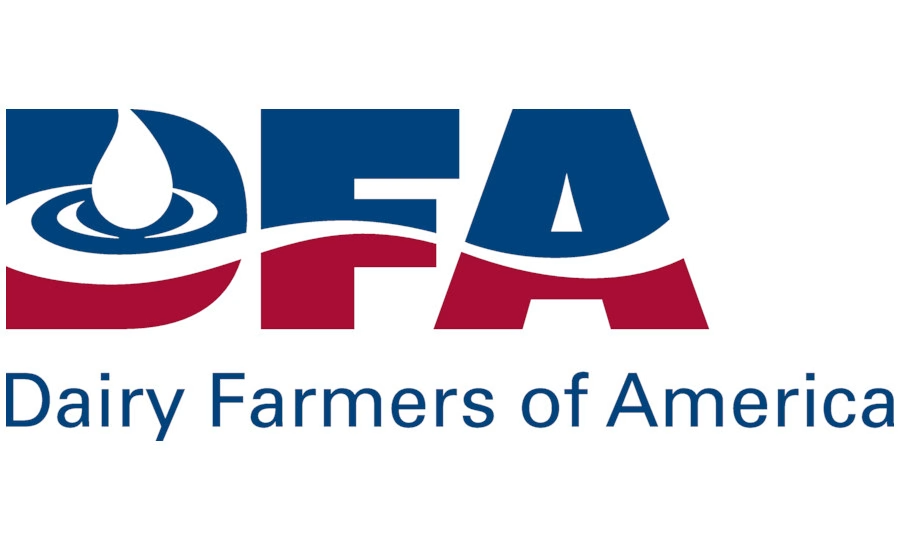How are North Dakota’s mega dairy farms changing the industry? What are the impacts on small dairy farmers and the future of traditional farming?
Deeply rooted in North Dakota’s agricultural heritage, dairy farming has always been synonymous with small, family-owned farms. They are recognized for preserving rural vitality and agricultural heritage and providing fresh milk for local markets. Their legacy of dedication, blending contemporary needs with heritage, is a testament to their commitment and values.
One farmer aptly captures the essence of farming, saying, “Farming is not just a heritage; it’s a way of life. Our milk nourishes not just our bodies but also the fabric of our communities.” This personal connection to their work makes these farmers’ struggles very relatable.
Nowadays, large commercial dairy farms interrupt this traditional setting. The growth of mega-dairies in North Dakota is altering the tale of dairy farming and calling into question the future sustainability of small, family-run farms and the communities they serve.
The Unstoppable Rise of Mega-Dairies: Riverview Dairy’s Expansion in North Dakota
With Riverview Dairy’s most recent developments in North Dakota, dairy farming is changing dramatically. These gigantic new mega-dairies will have 25,000 and 12,500 cows, respectively. This move represents a significant break from the usual small-scale dairy operations that most people are familiar with.
The investment is equally impressive based on capital costs of $7,200 per cow. This equates to around $180 million for the larger farm and $90 million for the smaller one. These numbers illustrate an industrial trend in less crowded places, mainly west of the Mississippi River, favoring new mega-farms.
Mind-Boggling Milk Production: Riverview Dairy’s New Mega-Diaries to Transform Industry Standards
The new mega-diaries of Riverview Dairy in North Dakota are intended to generate incredible daily productivity. The largest farm, with 25,000 cows, is expected to produce over 300,000 gallons of milk daily. This emphasizes these contemporary facilities’ enormous production potential and helps define their relevance in the American dairy industry.
A striking distinction emerges when these figures are compared to those of smaller dairy farms. A simple farm of 150 cows might produce 1,800 gallons of milk daily. The largest farm in Riverview produces almost 167 times more milk than a typical small farm; even the second farm, which has 12,500 cows, can produce around 150,000 gallons per day.
Because of developments in automation and specialization, mega-dairies can now operate efficiently and produce on a large scale. This has led to increased efficiency and technological advancements in the dairy industry. However, this also raises questions about the environmental impact and sustainability, notably regarding water management and pollution. Many dairy farmers consider this a significant industrial revolution that necessitates rethinking dairy production’s future.
Riverview Dairy’s Green Energy Gamble: Turning Manure into Money and Mitigating Environmental Impact
Riverview Dairy’s large-scale agricultural activities need thorough environmental monitoring. It is excellent that thousands of cows’ excrement can be handled to produce natural gas. These farms actively combat climate change by capturing methane, a potent greenhouse gas, as it breaks down manure and converts it into sustainable energy. This method benefits the national natural gas market and provides a better energy supply, lowering reliance on fossil fuels. By converting waste into a valuable resource, this strategy addresses traditional manure management challenges such as water contamination from runoff, demonstrating sustainable and productive farming practices.
With $7,200 invested per cow, it indicates enormous infrastructure requirements, and the costs and complexity associated with these systems are high. Even if hazards such as methane leaks persist, the method needs regular monitoring to ensure safety and efficiency. Furthermore, such large-scale operations have a significant environmental effect. While converting manure into natural gas has clear advantages, the massive waste these mega-diaries produce raises ecological concerns. Concentrating animals in compact locations can harm local ecosystems, alter biodiversity, and use a lot of land and water. It still needs to be resolved to balance the necessity to preserve local natural resources and the need for maximum efficiency.
The Unseen Economic Shifts: How Riverview Dairy’s Mega-DariesWill Redefine the Market Landscape
Riverview Dairy’s mega-diaries will transform North Dakota’s dairy landscape. With over 300,000 gallons of milk produced daily, one farm alone might tip the scales, resulting in market saturation and reduced milk prices. The industry has always struggled to balance demand and production, and these new mega-diaries may exacerbate the problem.
Riverview Dairy’s economies of scale may allow them to reduce expenses, putting smaller dairies at a competitive disadvantage. This might lead to market consolidation, forcing out traditional farmers and raising concerns about the industry’s resilience and diversity.
The ramifications will be felt both nationally and locally. A surplus of dairy products from more minor, more dispersed farms might increase price volatility. Although mega-dairies enable technological improvements and efficiency, disruptions such as sickness or legal changes may impact supply and pricing. Moreover, the shift towards mega-dairies could lead to the loss of small-scale farming traditions and the disruption of rural life in North Dakota.
The expansion of Riverview Dairy offers a glimpse into the future, stressing sustainability and economics. However, this underscores the need for strategic planning for all dairy farming community members, large and small. Potential solutions could include diversifying products, adopting sustainable practices, and forming cooperatives to enhance bargaining power and shared resource use.
The Global Shift to Industrial Dairy Farming: Riverview Dairy within the Larger Context
As Riverview Dairy embarks on its daring North Dakota expansion, it is critical to analyze this in the context of broader dairy production trends. California and Texas are at the forefront of the move toward larger, more industrialized dairy farms in the US. California’s farms often exceed 10,000 cows, demonstrating the vast scale and efficiency driving this growth. Europe and New Zealand are following relatively similar worldwide patterns. While New Zealand emphasizes large, successful pastoral systems, Dutch and Danish farmers use advanced breeding and automated equipment to manage herds.
With tens of thousands of cows, Mega-farms are becoming the norm even in developing countries such as China. This global trend toward larger-scale, more efficient farms highlights how Riverview Dairy’s expansion fits into a much larger movement. The rise of these mega-dairies raises severe concerns for small-scale dairy farmers’ livelihoods. Cooperative approaches and innovative ideas are urgently needed to keep traditional dairy farming viable in this rapidly changing market.
How Mega-Dairies Are Redefining the Dairy Landscape: A Deep Dive into the Impacts on Small Farms
Mega-dairies’ growth, such as Riverview Dairy’s new North Dakota operations, will significantly influence small dairy farmers. With 25,000 and 12,500 cows each, these enormous companies are very lucrative and efficient, fueling intense competition for smaller, family-run farms. Lower milk prices due to increased competition make it more difficult for smaller farms to remain viable with quality milk.
- Competition: Small farms can’t compete with mega-dairies productivity, leading to lower market prices and squeezing their profits.
- Financial Pressures: The immense investment in mega-farms, around $7,200 per cow, is beyond reach for small farmers. Rising feed, labor, and equipment costs without economies of scale put additional financial strain on them.
- Industry Standards: Large farms drive industry regulations and standards, often making compliance difficult and expensive for smaller farms. For example, converting manure into natural gas, while beneficial, may be unaffordable for smaller operations.
These issues highlight a broader agricultural trend in which large, well-capitalized farms dominate the landscape. The industry’s evolution calls into question the status quo for a fifty-year-old dairy farmer. With rising concerns about the survival of small-scale dairy farming in the era of mega-dairies, the future favors those that can adapt, innovate, and scale.
Strategies for Small Farms Survival: Navigating the Mega-Dairy Era with Ingenuity and Innovation
As the dairy industry shifts with the rise of mega-dairies like Riverview Dairy’s massive operations in North Dakota, smaller dairy farmers must adapt to survive. Here are several key strategies:
- Diversification: Small farms can quickly pivot to include crop production, agro-tourism, artisanal cheese, and other specialized dairy products. Multiple revenue streams can insulate them from market volatility.
- Niche Marketing: Emphasize organic, grass-fed, or ethical animal treatment. Building a brand based on local and sustainable practices can attract customers who are concerned about the environmental impact.
- Adopting New Technologies: Use affordable farming tech like robotics for milking, AI health monitoring, and precision agriculture to boost efficiency and reduce costs. Grants and subsidies can help with initial investments.
By embracing these strategies, small dairy farms can succeed in an industry increasingly dominated by mega-dairies. Adaptability and innovation will be their key allies.
Future Horizons: The Battleground of North Dakota’s Dairy Industry and the Imperative for Small Farmers to Innovate or Perish
Riverview Dairy’s mega-dairies represent a significant shift in North Dakota dairy production. These large businesses employ the latest technology to increase efficiency and gain a competitive advantage over smaller farms. Small farms may face financial and productivity challenges if they cannot match these capital expenditures.
Environmental sustainability is also quite essential. Mega-dairies convert manure into natural gas, establishing new industrial standards. Smaller farms may need to install smaller-scale bioenergy projects or other sustainable initiatives to remain competitive in an environmentally conscious market.
Smaller farms must be reliant on innovative ideas. Niche marketing, including locally produced or organic items, may appeal to client preferences while fetching higher prices. Creating direct-to-consumer sales channels, such as local companies, farmers’ markets, or online sites, allows small farms to stand out from larger ones.
Although mega-dairies pose significant challenges, they also provide opportunities for small dairy farms ready for innovation. Technology, sustainability, and focusing on niche markets may all help small dairy producers thrive in North Dakota’s shifting dairy business.
The Bottom Line
The dairy industry is transforming significantly with Riverview Dairy’s new mega-farms in North Dakota. These vast facilities are the new standard for producing milk at a lower cost and more efficiently via economies of scale. They also prioritize alternative energy, such as converting dung to natural gas. On the other hand, small dairy farmers find this development challenging; it increases financial pressures and accelerates the decline of traditional farms. Small farm owners must adapt by encouraging inventiveness, concentrating on niche markets, and using advanced and sustainable practices. Despite its resilience, the agricultural community must band together to learn how to flourish in this rapidly changing agriculture and food world.
Key Takeaways:
- Riverview Dairy’s new mega-dairies in North Dakota represent a significant industry shift to large-scale operations in less-populated areas.
- The largest facility will house 25,000 cows and produce around 300,000 gallons of milk daily, showcasing the scale of modern dairy farming.
- These operations increasingly focus on sustainability, with initiatives like converting manure into sellable natural gas.
- The rise of mega-dairies presents significant challenges for small farmers, who must innovate and diversify to remain competitive.
- Advantages for small farms can include adopting new technologies such as robotics and AI health monitoring.
- Small farmers may find strength in numbers by considering cooperative models to combat market saturation and maintain fair pricing.
Summary:
The article delves into the implications of Riverview Dairy’s establishment of two mega-dairies in North Dakota, marking a significant shift in dairy farming. Dairy operations are moving west of the Mississippi River, typically to sparsely populated regions. Riverview’s largest new farm will house 25,000 cows and produce 300,000 gallons of milk daily, converting manure into sellable natural gas. This highlights how large-scale operations are transforming the industry. Small farmers face challenges, needing to innovate, diversify products, adopt sustainable practices, and consider cooperatives to survive amidst potential market saturation and lower milk prices. Adopting new technologies like robotics and AI health monitoring could be critical to their survival.













